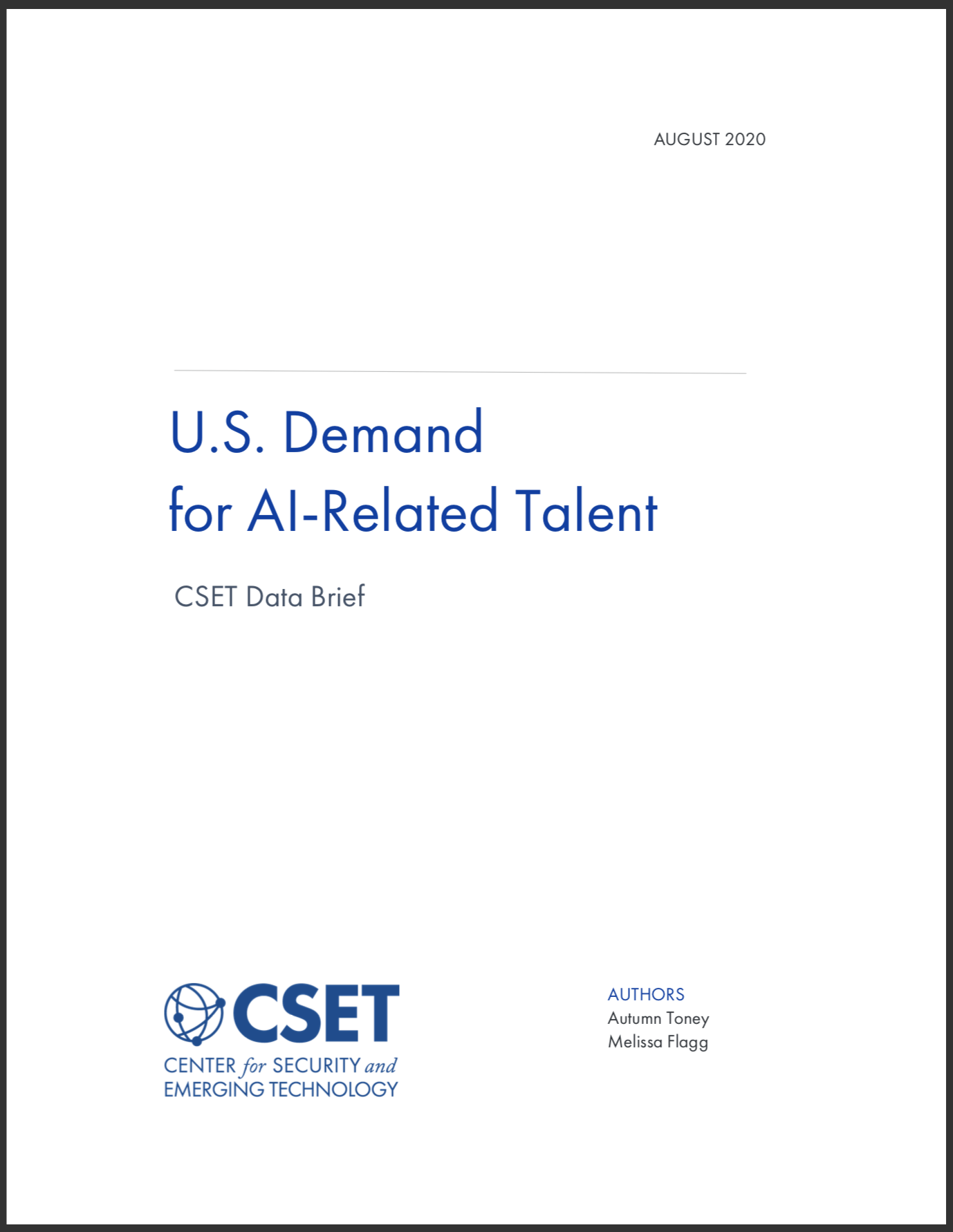Artificial intelligence seems ubiquitous at the moment, promising a revolution affecting every aspect of life. Mentions of “artificial intelligence” in licensed news sources from LexisNexis1 have increased from just over 6,000 in 2015 to nearly 83,000 in 2019—growing more than an order of magnitude over four years. Both industry and government see AI as a technology pivotal to future growth and long-term competitiveness: a 2018 McKinsey Global Institute report suggests that AI could contribute an additional $13 trillion in global economic output by 2030,2 and the U.S. military has doubled down on AI development and implementation, drafting the first Department of Defense Artificial Intelligence Strategy and establishing the Joint Artificial Intelligence Center in 2018.3 Meanwhile, forecasts that China is taking the lead in AI have prompted the United States to join a G7 international panel setting ethical guidelines for the use of AI.4
As both the government and private sector work to reap the benefits offered by artificial intelligence, it remains unclear how creating AI applications, integrating them into existing processes, and deploying them effectively will actually play out. Technologies like GPS started with PhD physicists, but it took entire industries of engineers, designers, testers, program managers, and business analysts—most of them with more modest and varied educations—to convert equations and space technology into the broad and varied GPS devices all of us depend on today.
As the United States makes an analogous AI transition, a key question is what skills will be needed and where? Essentially all recent analyses focus on top-end, PhD-level researchers. While crucial for developing novel AI concepts and techniques, a much larger workforce with less education but broader skills is needed to integrate these concepts into technologies and systems driving military and economic progress and leading us toward an AI-enabled society.5
To explore the nature of education that will be needed, we start with market demand, using the Burning Glass dataset, which incorporates more than 45,000 online job sites, to reveal the geographic and sectoral spread and associated educational requirements serving as market signals to our AI-relevant talent pool.6
This brief is a first step at understanding the broader landscape of talent relevant to AI, assessing it through the lens of market signals sent via job postings.7 Understanding the full range of AI-related talent needed must go beyond the usual focus on research and new algorithms to encompass the skills needed to integrate and use AI in a broad range of sectors and legacy systems. While not exclusive to AI, these jobs are critical to integrating AI into our economy and military capability; they include roles like Software Development Engineers, Systems Engineers, and Business Analysts.8 Job posting data does not tell us the number of positions filled or by whom, but does show the skill types and job locations marketed as opportunities across the United States.
Download the data brief
U.S. Demand for AI-Related Talent- The data used was taken from 2209 sources from LexisNexis Metabase that were present in all years from 2011 through 2020. These sources include 809 marked as Local news, 524 marked as Trade, and 257 marked as National news. To correct for yearly fluctuations in the total number of articles published, the counts within each year are multiplied by the maximum yearly count overall years divided by the current year’s count; Nexis Metabase (2020). Nexis Metabase, https://www.lexisnexis.com/en-us/products/data-as-a-service/academic.page.
- Jacques Bughin, Jeongmin Seong, James Manyika, Michael Chui, and Raoul Joshi, “Notes from the AI Frontier: Modeling the Impact of AI on the World Economy,” McKinsey Global Institute, September 2018, https://www.mckinsey.com/~/media/McKinsey/Featured%20Insights/Artificial%20Intelligence/Notes%20from%20the%20frontier%20Modeling%20the%20impact%20of%20AI%20on%20the%20world%20economy/MGI-Notes-from-the-AI-frontier-Modeling-the-impact-of-AI-on-the-world-economy-September-2018.ashx.
- “Summary of the 2018 Department of Defense Artificial Intelligence Strategy: Harnessing AI to Advance Our Security and Prosperity,” Department of Defense, February 2019, https://media.defense.gov/2019/Feb/12/2002088963/-1/-1/1/SUMMARY-OF-DOD-AI-STRATEGY.PDF; Deputy Secretary of Defense, Establishment of the Joint Artificial Intelligence Center, June 27, 2018, https://admin.govexec.com/media/establishment_of_the_joint_artificial_intelligence_center_osd008412-18_r….pdf.
- Natalie Sherman, “Is China gaining an edge in artificial intelligence?” BBC News, November 12, 2019, https://www.bbc.com/news/business-50255191; Amy Webb, “China Is Leading in Artificial Intelligence–and American Businesses Should Take Note,” Inc. Magazine, September 2018, https://www.inc.com/magazine/201809/amy-webb/china-artificial-intelligence.html; Fabian Westerheide, “China — The First Artificial Intelligence Superpower,” Forbes, January 14, 2020, https://www.forbes.com/sites/cognitiveworld/2020/01/14/china-artificial-intelligence-superpower/#22ea3ac32f05; “US Joins G7 Artificial Intelligence Group to Counter China,” U.S. News & World Report, May 28, 2020, https://www.usnews.com/news/business/articles/2020-05-28/us-joins-g7-artificial-intelligence-group-to-counter-china.
- Terence Tse, Mark Esposito, Takaaki Mizuno, and Danny Goh, “The Dumb Reason Your AI Project Will Fail,” Harvard Business Review, June 8, 2020, https://hbr.org/2020/06/the-dumb-reason-your-ai-project-will-fail.
- Burning Glass database, https://www.burning-glass.com.
- In this analysis, we focus on the educational mix and domestic locations of jobs categorized as both core and adjacent AI positions; note that data science is listed in both the core AI and AI-adjacent categories, thus job postings tagged as data science are present in both datasets (see Appendix).
- Full list can be found at https://github.com/georgetown-cset/AI_marketdemand_BG.
